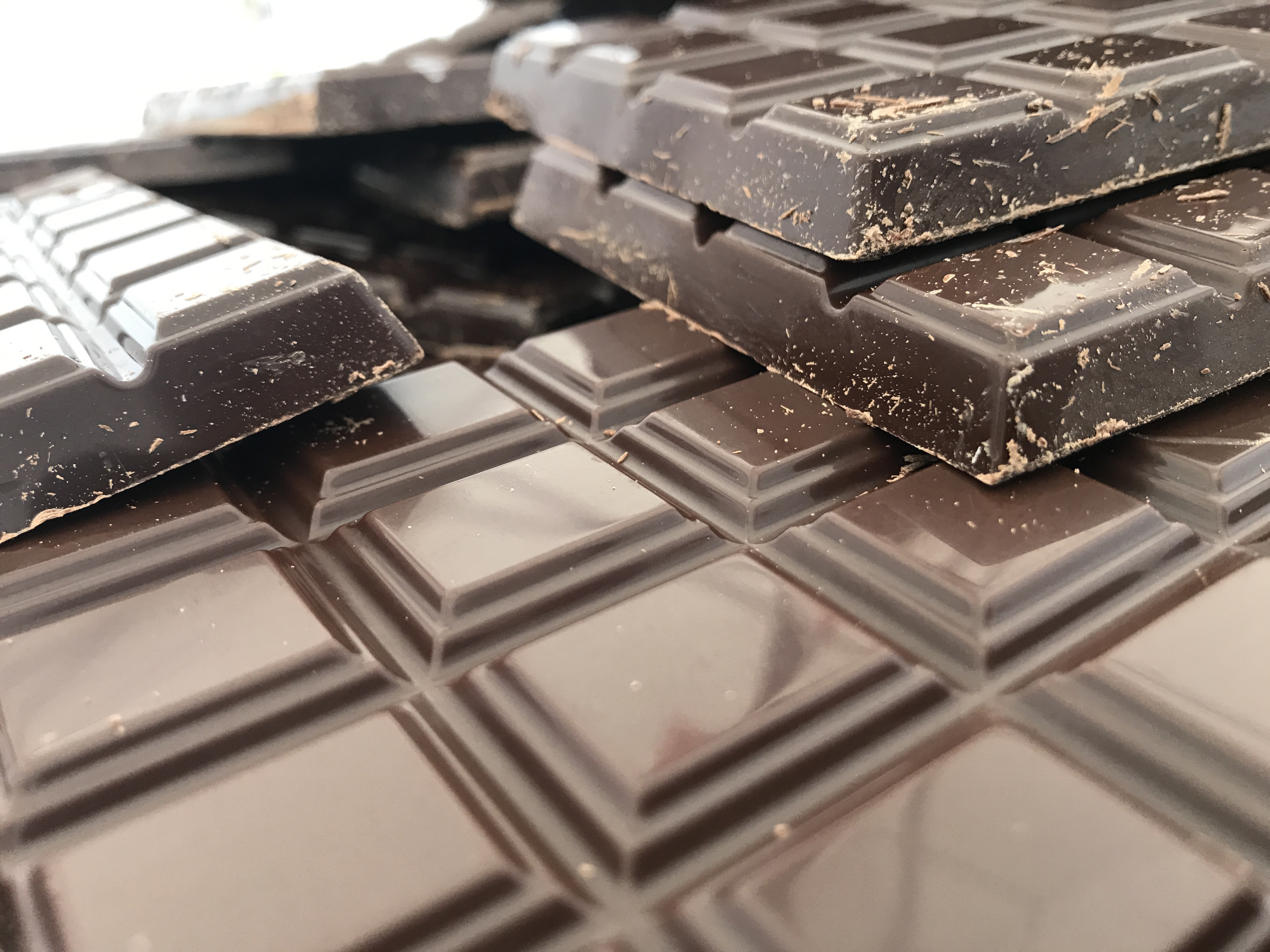As a chocolatier, one of the most common questions I’m asked is, “What’s the best way to melt chocolate?”

It’s a simple enough question, but the answer involves more than just applying heat.
To get that perfectly smooth, glossy finish and avoid pitfalls like seizing or overheating, it’s important to understand a few key principles.
Melting chocolate might seem straightforward, but getting professional results requires a bit of technique and knowledge.
Whether you're planning to drizzle, dip, or enrobe with melted chocolate, following these methods will help you achieve the best results every time.
Common Risks When Melting Chocolate
Seizing:
A small amount of water or steam can cause chocolate to seize, turning it into a grainy, lumpy mess.
This is a common issue, especially for those new to working with chocolate.
The key to avoiding this is to keep everything completely dry, from your utensils to your work surface.
Overheating:
Chocolate is highly sensitive to heat. Overheating can cause the cocoa butter to separate, leading to a thick, unworkable consistency. It can also burn the sugars, resulting in a bitter flavour. Temperature control is crucial.
Blooming:
 Badly tempered chocolate can lead to fat or sugar bloom, where the surface of the chocolate becomes dull and streaky.
Badly tempered chocolate can lead to fat or sugar bloom, where the surface of the chocolate becomes dull and streaky.
While this doesn’t affect the taste, it does affect the appearance and texture.
Proven Methods for Melting Chocolate
Here are the best methods to melt chocolate, ensuring a smooth, luscious consistency:
Double Boiler (Bain-Marie) Method
This is the method I recommend most often because it offers precise control and reduces the risk of overheating.
What You’ll Need:
A heatproof bowl
A saucepan
Chocolate (bars, batons, or buttons)
Instructions:
Fill the saucepan with a few inches of water and bring it to a simmer. Ensure the water doesn’t touch the bottom of the bowl when it’s placed on top.
Melting: Place the chocolate in the heatproof bowl and set it over the saucepan. Stir continuously to promote even melting.
Completion: Once the chocolate is melted, remove the bowl from the heat, wiping the bottom to prevent any water from getting into the chocolate.

Microwave Method
This method is quicker and works well if you’re pressed for time, but it requires close attention to avoid overheating.
What You’ll Need:
A microwave-safe bowlChocolate (bars, batons, or buttons)
Instructions:
Break the chocolate into uniform pieces for even melting.
Melting: Microwave the chocolate on medium power in 20-30 second intervals, stirring thoroughly after each burst.
Stop microwaving just before the chocolate is fully melted and stir until smooth.
Direct Heat (Stovetop/BBQ) Method
I generally advise against this method for beginners due to the high risk of burning the chocolate.
However, it can be used with careful attention.
What You’ll Need:
A heavy-bottomed pan
Chocolate (bars, batons, or buttons)
Instructions:
Break the chocolate into uniform pieces.
Melting: Place the pan on the lowest heat setting possible.
Stir constantly to prevent the chocolate from sticking to the pan.
Remove from heat as soon as the chocolate is mostly melted, and continue stirring off the heat.
Hairdryer Method
This method is less conventional but can be useful for melting small quantities of chocolate or for precise control.
It’s particularly handy if you’re working with a small amount and need a gentle, controlled heat source.
What You’ll Need:
A heatproof bowlA hairdryer
Chocolate (bars, batons, or buttons)
Instructions:
Break the chocolate into small, uniform pieces and place them in the heatproof bowl.
Melting: Set the hairdryer to its lowest heat setting.
Hold the hairdryer about 10-15 cm (4-6 inches) above the chocolate and move it around to distribute the heat evenly.
Stir the chocolate frequently to ensure uniform melting.
Be careful not to overheat, as the hairdryer’s heat can be less predictable than other methods.
Expert Tips for Perfectly Melted Chocolate
Use high-quality chocolate: The better the quality, the smoother and more flavourful your melted chocolate will be. Higher cocoa content and fewer additives make for better results.
Keep moisture away: Even a drop of water can cause chocolate to seize. Make sure all your tools are completely dry.
Control the temperature: Chocolate melts at a low temperature (28-30°C for milk and white chocolate, and (30-31.5°C for dark chocolate), so be patient and melt it slowly.
Don’t overheat: Once nearly melted, remove the chocolate from the heat and continue stirring until fully smooth.
Residual heat will finish the job without risking separation or burning.
Tempering for enrobing: If you’re using the chocolate for enrobing, tempering is essential.
This process, which involves heating, cooling, and reheating chocolate to specific temperatures, ensures a glossy finish and a crisp snap. See my post here for more details.
Bringing It All Together
Helping others understand the nuances of melting chocolate is one of the joys of being a chocolatier.
It’s always rewarding to see someone’s eyes light up when they master this skill, especially after a few previous attempts that didn’t go as planned.
Whether it’s drizzling, dipping, or creating a decadent fondue, the right technique makes all the difference.
With a little practice, anyone can achieve that perfect, silky-smooth melted chocolate, ready to elevate their culinary creations to the next level.
If you have any other chocolate-related questions, don’t hesitate to ask—I'm always happy to share what I know and help you bring out the best in your chocolate adventures!
